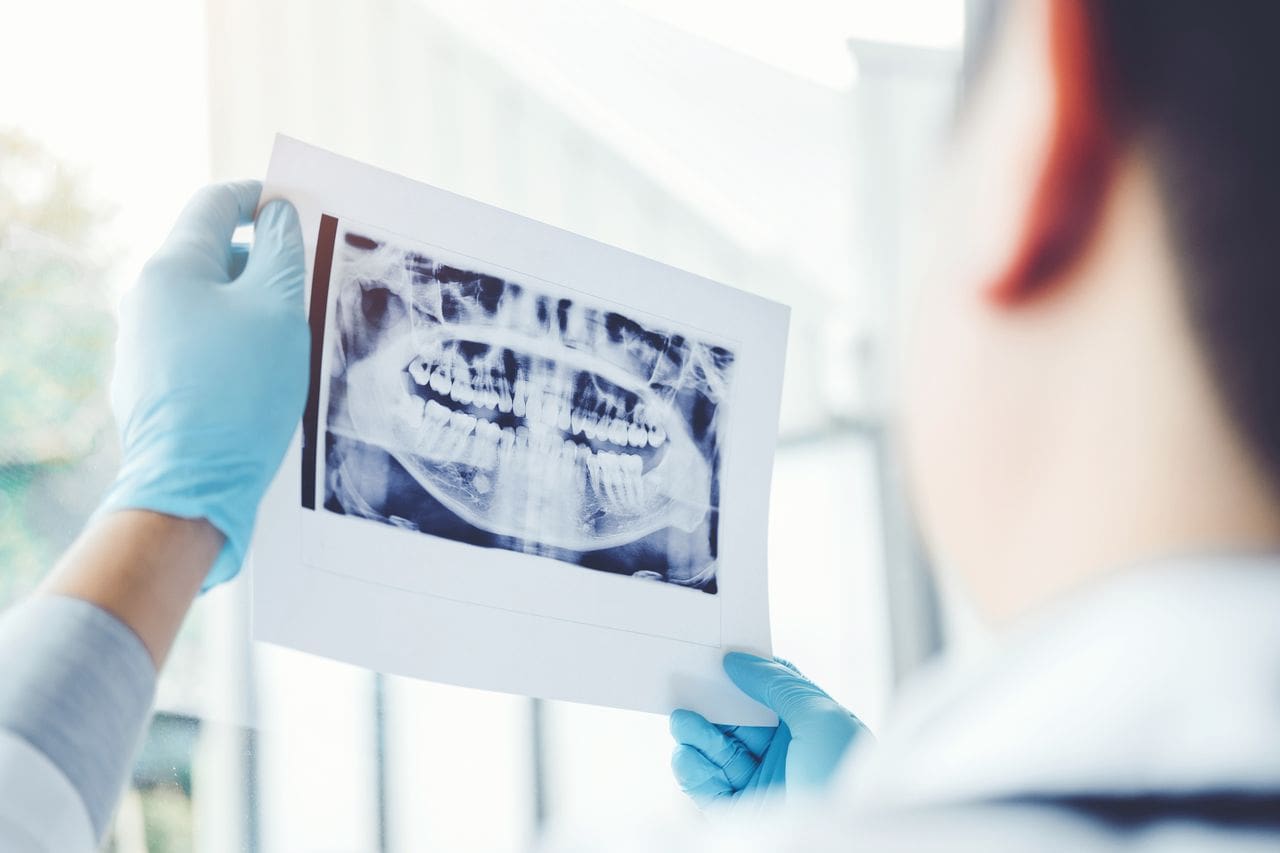Tooth extraction is a common dental procedure and general dental care service Dr. Slate performs in Washington, DC. Understanding the reasons, types, and recovery process can help you feel more at ease. Tooth extraction is a routine procedure that can greatly benefit your oral health. Dr. Slate, a dentist in Washington, DC, is here to guide you through each step, from consultation to recovery. If you have any concerns or questions, do not hesitate to reach out for professional advice.

Reasons for Tooth Extraction
While we practice conservative dentistry and save the tooth whenever possible, sometimes removing it is best for your oral health. There are many different reasons why you may need a tooth extraction. These include:
- Severe Damage or Decay: If the damage is too extensive for a root canal and dental crown to fix, we’ll need to remove the tooth. Once decay reaches the inner tooth pulp, it can cause severe pain and infection.
- Advanced Gum Disease: Gum disease impacts the bone and tissue that hold your teeth in place. The tissue and bone erode as it progresses, causing your teeth to loosen. This can cause pain and difficulty chewing. Sometimes, removing the tooth and protecting the remaining teeth is best.
- Wisdom Teeth: A third set of molars erupts in our late teens or early twenties. Our mouths aren’t built with room for this extra set of molars. They can get stuck under the surface, causing pain, swelling, and infections. Even if the teeth erupt properly, they often cause the rest of your smile to become crowded or cramped. Most patients get their wisdom teeth removed.
- Orthodontic Treatment: Some people don’t have enough room in their jaw. Teeth push each other and overlap, becoming crooked. Sometimes, we must remove teeth to correct the smile properly for successful teeth straightening treatment.
Types of Tooth Extractions
Tooth extractions fall into two main categories: simple and surgical.
Simple Tooth Extractions
A simple tooth extraction occurs when the tooth is visible above the gumline. It’s easy and takes one visit to our office. Dr. Slate numbs the surrounding area with a local anesthetic for your comfort. We also provide sedation options if you require some relaxation throughout the extraction process.
Then, he loosens your tooth with an instrument called an elevator, rocking it back and forth. This breaks the tethers the tooth has to the gums and bone. Once it’s loosened enough, he uses forceps to remove it completely. We place gauze on the area to control bleeding and help the area heal. Most patients recover from this procedure after only a few days.
Surgical Tooth Extractions
Surgical tooth extractions are more complex procedures that occur when the tooth has broken off at the gumline or is under the surface. They often require sedation and are a more intensive process. Since the tooth isn’t visible, the dentist has to make an incision to access it.
Sometimes, we need to remove some bone around the tooth or break the tooth into pieces to extract it from your mouth successfully. Once the procedure is complete, the dentist cleans the area thoroughly and stitches it up for recovery. Recovery takes longer than with simple extractions. You must follow aftercare instructions to ensure everything heals properly and doesn’t get infected.
Preparation for a Tooth Extraction
Preparing for a tooth extraction begins with a thorough dental examination. Dr. Slate will assess your oral health and take X-rays to determine the best approach. He’ll also discuss your medical history and what medications you’re currently on. Things like blood thinners can impact the process, and we need to know beforehand. He then creates a personalized treatment plan to fit your needs.
While Dr. Slate can perform simple extractions in the office, he outsources surgical ones to a trusted oral surgeon.
With a treatment plan in place, pre-extraction instructions will be provided. Following these instructions will help ensure the procedure goes smoothly. While Dr. Slate does not usually extract teeth, he can recommend an appropriate oral surgeon to perform the procedure.
During the extraction, anesthesia is administered to numb the area. Your oral surgeon will then carefully remove the tooth. While most extractions are straightforward, some complications can occur. It is crucial to discuss potential risks with your dentist.
When you come into the office, wear comfortable clothing and come relaxed and hydrated. If you’re going to be getting sedation, ensure that you have a ride home from the procedure, as you won’t be allowed to drive.
Post-Extraction Care and Recovery
Proper care is essential for healing after the extraction. Blood clot formation in the socket is a critical step in recovery. Pain management is important, and over-the-counter medications can help. A diet should consist of soft foods, and good oral hygiene is crucial. Dr. Slate may schedule follow-up appointments to monitor your progress.
Though complications are rare, they can happen. Dry socket, where the blood clot fails to develop properly, can cause intense pain. Infection is another potential issue requiring prompt attention. In rare cases, nerve damage may occur, resulting in numbness or tingling. If any complications arise, contact Dr. Slate immediately.
To protect the blood clot, don’t use straws or smoke for at least 48 hours following the procedure. You should also avoid aggressive rinsing or swishing in your mouth for the first 24 hours. After the first 24 hours, begin rinsing the site with saltwater regularly. This helps prevent infection and assists in the healing process. You should still brush and floss your teeth, but be careful with the extraction site, and avoid brushing that directly.
While you’re healing, avoid smoking and alcohol. Both of these things slow the healing process and increase your risk of dry socket and other complications. Keep an eye on the site and watch out for any signs of infection. This includes severe pain and excessive bleeding.
